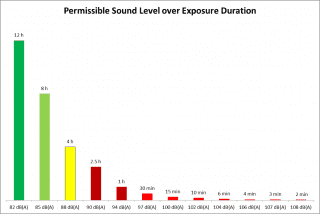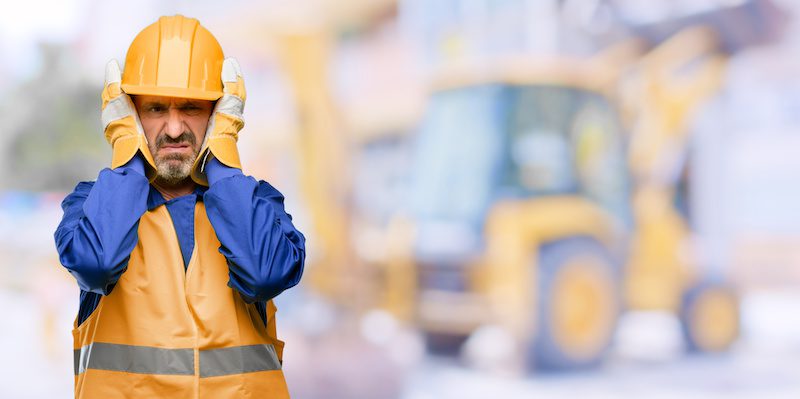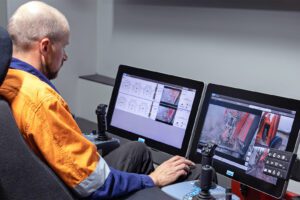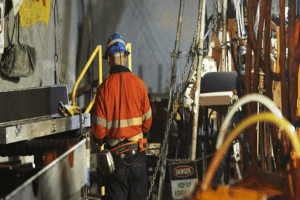Cabin Noise and the external Noise of mobile mining equipment have been the enemies of the industry for ages. But are we winning the noise control mitigation battle? We examine the various manufacturer noise control/ mitigation options as well as some third party noise control solutions.
Noise control and mitigation in mining
“Noise Mitigation is becoming increasingly important in many mining regions of Australia, such as the Hunter Valley in New South Wales. Due to close proximity to small towns and villages; local farmers; horse-breeders and wineries the mining noise is becoming one of the first anti-mining objections. Another no less important aspects of noise mitigation is the exposure of the machinery operators to cabin noise. However trivial these issues may seem – each of them is paramount for success of a particular mining project or piece of machinery.”
Issues with Noise across the mining industry
It is a common knowledge that noise may not only be a major source of disruption to our work, but also is an occupational hazard. It is the cause of the noise-induced hearing loss, which occurs as a result of either a short time exposure to the excessive noise, or a long time exposure to the levels close to hazardous. The graph below illustrates the thresholds and the safe duration of one’s exposure to certain noise levels.
Figure 1. Permissible Sound Level over Exposure Duration

(image courtesy of Rock Cognition)
The dB(A) unit (sometimes also spelt dBA or dBa) is called A-Weighted decibel and represents the relative loudness of the sound in air as perceived by the human ear. As the human ear is less sensitive to low frequencies, particularly below 1000 Hz, the correction is made from dB, which are used to measure the absolute sound level. There are other derivatives describing personal exposure to various sound levels, such as LAeq,T, i.e. an A-Weighted decibel over a time. It is especially important when judging the operator’s exposure to the mobile equipment noise or so-called Cabin Noise.
When it comes to the disputes with the mine site neighbours it is more likely that the references to noise will be in unweighted dB, as the concerns here are over Peak Levels; permanent exposure and effects of noise, inclusive of all frequencies. (Even though the acoustic theory is far more complex and it would be an arduous task to explain the fundamentals in a short article.)
READ RELATED CONTENT
- New Guidelines Published for Autonomous Mining
- Your own portable noise dose meter
- Exposure and control of noise in mining
- Noise-induced hearing loss | causes and prevention
Nevertheless, two other common terms often used in the industry are the Sound Power and Sound Pressure. The first is the total emitted noise, while the other is its derivative and depends on the distance, direction and a few other factors.
Noise control Standards, Acts and Guidelines
As per the relevant Standards; Acts and Regulations – below is an incomplete list of those. It may look (and should look) confusing and, inevitably generates an idea to simplify/unify them. In an attempt to simplify the understanding of the topic it should be noted that most OEMs must comply with the relevant ISO standards in order to develop certain manufacturing practices and capability to meet subsequent local rules and regulations.
Australian Standards are the standards developed to reflect local requirements and document the relevant procedures. At the same time, full compliance with the ISO or AS does not guarantee that additional requirements are recommended or imposed either by the States; Mining Companies or Mine Sites. It is the author’s strong suggestions that any supplier must do its own compliance review and risk assessment of its product to make sure it is fully compliant for the use at a particular mine site. However, the list below may be of a good reference.
AS 2012.1-1990 Acoustics – Measurement of airborne noise emitted by earth-moving machinery and agricultural tractors – Stationary test condition – Determination of compliance with limits for exterior noise
AS 2012.2-1990 Acoustics – Measurement of airborne noise emitted by earth-moving machinery and agricultural tractors – Stationary test condition – Operator’s position
AS/NZS 1269.0-2005 Occupational Noise Management Part 0: Overview and General Requirements, Standards Australia, New South Wales
AS/NZS 1269.2-2005 Occupational Noise Management Part 2: Noise Control Management, Standards Australia, New South Wales
AS/NZS 1269.3-2005 Occupational Noise Management Part 3: Hearing Protector Program, Standards Australia, New South Wales
AS/NZS 1269.4-2014 Occupational Noise Management Part 4: Auditory assessment, Standards Australia, New South Wales
QGN 22 Guidance Note for Management of Noise in Mines (Mining and Quarrying Safety and Health Act 1999 and Coal Mining Safety and Health Act 1999)
Management of noise in Western Australian mining operations – guidelines.
ISO 3744-2010 Acoustics – Determinations of sound power levels and sound energy levels of noise sources using sound pressure
ISO 11201:2010 Acoustics — Noise emitted by machinery and equipment — Determination of emission sound pressure levels at a work station and at other specified positions in an essentially free field over a reflecting plane with negligible environmental corrections
ISO 11203:1995 Acoustics — Noise emitted by machinery and equipment — Determination of emission sound pressure levels at a work station and at other specified positions from the sound power level
ISO 6393-2008 Earth moving machinery – Determination of sound power level – stationary test condition
ISO 6394-2008 Earth-moving machinery — Determination of emission sound pressure level at operator’s position — Stationary test conditions
ISO 6395-2008 Earth moving machinery – Determination of sound power level noise emissions – dynamic test conditions
The last three ISO standards are the once referred to by the most OEM in their product specifications or test reports.
There are also standards regulating the management of the site noise and standards relevant to various types of equipment for sound measurement and calibration, as well as those for Personal Protective Equipment.
There are independent Acts and Regulations relevant to a Noise Assessment for buildings; blasting; road traffic noise; etc.; and each should be assessed and addressed for obtaining an EIS (Environmental Impact Statement) for a mining project. There is even a Guideline for Community Noise issued by the World Health Organisation. However, let’s focus on mobile mining equipment here.
Major Mining Equipment Manufacturers and noise control
While all mining equipment manufacturers must comply with the above-mentioned standards, the compliance itself traditionally has never been a part of the OEMs marketing. It is assumed that there are some basic requirements are to be met by default. Yet, most OEMs can further improve their noise readings on client’s request or offer an already designed Sound Attenuation Pack. Many requests will fall under mine-specific requirements and below are just some examples, what the manufacturers could offer in addition, rather than the complete list of what options could be available. Where possible, the units originally specified by the OEM have been retained.
Atlas Copco has approached the noise mitigation issue from several angles. It has been able to meet the requirements for diesel-powered machines. As an example – the MT5020/MT6020 in cabin rating is 80 dB(A), which ensures 12 continuous hours of safe operator’s exposure. Atlas Copco has been able to improve the design of the cabin by fitting additional paddings within it.
Further to the improvements done based on safety and comfort, technological advancement has allowed Atlas Copco the ability to further improve the sound suppression. One of the main improvements done is by introducing Can Bus or RCS. By eliminating hydraulic drives in the Cabin and replacing those with electric drives, noise and to a certain extent heat have been reduced. The MT65 underground truck has achieved the cab noise reduction to 77 dB(A), which is a staggering enhancement.
Also, as an alternative to diesel-powered machines, the company has introduced a battery-powered loader BEST7, which is part of Atlas Copco’s noise mitigation strategy by embracing other forms of power generation. Being electric driven this eliminates the engine noise.
Caterpillar offer XQ (Extra Quiet) truck packages to operate at low dB levels. Attenuation will include modification of engine enclosures; fan louvres; mufflers. This can be done without compromising the serviceability of the machine; altering heat dissipation and minimising extra weight. Similar sound attenuation could be applied to other Caterpillar mobile equipment, such as D10 and D11 dozers with additional modification of undercarriage idlers. This can be done ex-factory or retrofitted to the existing machines.
Cummins as one of the major engine suppliers for the mining industry has been able to reduce the noise of the diesel engines themselves. For example, their QSK60 MCRS fuel system (Tier 2 compliant) engine has substantially improved Noise Emission readings, comparing to the previous QSK60 HPI fuel system (Tier 1 Compliant), i.e.: 99.8 dB(A) vs 106.5 dB(A) (top); 99.8 dB(A) vs 106.5 dB(A) (right side); 100.8 dB(A) vs 106.5 dB(A) (left side) and 99.4 dB(A) vs 108 dB(A) (front).
Hitachi offers sound attenuation packages for trucks and excavators. The latter includes attenuation to the radiator; oil cooler; silencer; cradle and extension to the heat shield. Despite all the changes the modified parts have the same footprint as original and are interchangeable.
Komatsu offers sound attenuation packages for operations in Queensland and New South Wales.
Liebherr offers customised solutions for noise attenuation of their excavators and trucks. As an example, when a mine site in NSW requested to meet particular external noise requirements of 116 dB(A) for excavators and 113 dB(A) for mining trucks, the Australian customer and Liebherr formed a project team dedicated to meet and, where feasible, exceed the noise reduction standards. Liebherr’s engineering departments at both main plant facilities, in Newport News, in the US, and Colmar, in France, aided by noise emission experts and a detailed programme of research and development, assessed the problem. Using an approach based on both removal of noise at the source, and passive sound attenuation measures, Liebherr met the required standards for both excavators and trucks. The R 996 Liebherr Litronic excavators were all fitted with sound suppression packages. The packages were designed as a series of suppression modules that work together to reduce the overall sound power of each machine. The sound attenuating devices include sound absorbing panels throughout the engine bay, under the deck area and inside the counterweight. Substantial enclosures, lined with further sound absorbing panels were placed around the power packs and the hydraulic cooler house. Access to these areas is maintained via modified catwalks and ladders. Noise reduction from the engine fans was achieved by using multiple hydrostatically controlled units instead of a single belt driven fan. The engine fans were also electronically speed controlled to provide cooling only when required, reducing sound emissions further. Exhaust system sound emission reduction was also achieved.
The T282 diesel-electric haul trucks were assembled on site with comprehensive sound suppression packages. The noise reduction features include an aerodynamically designed fan coupled with a larger capacity radiator ensuring ample cooling capacity at lower fan speeds. Fan noise was further muted by a specially baffled grille, while still maintaining a similar profile to a conventional truck. Both the access stairway and the grille were also engineered to allow easy maintenance access. To reduce noise associated with retarding, a high volume, low noise radial fan was installed which delivers the cooling air to stainless steel quiet grids. This reduces both grid blower noise and the electrical humming often associated with retard resistors. The trucks engine area was enclosed by a variety of baffles and enclosures, fire resistant blankets were also installed for their acoustical properties and durability. Access to the engine area was maintained through doors on each side of the engine bay and from below through double opening belly pans. A reduction in exhaust noise was achieved by utilising specially designed mufflers. Non-reflective chain mesh mud-flaps were also installed to help the trucks meet the directional requirements of the noise specification.
Sandvik has been able to achieve excellent results for the recent TH663 underground articulated dump truck. At the operator’s position, the Measured A-weighted emission sound pressure measured at 76 dB (78 dB with the Diesel Particulate Filter).
Aftermarket noise control solutions
Unsurprisingly, there several specialised developers of Collision Avoidance Systems. As the development of such a high tech product may be outside of the core businesses of the large OEMs and some of them above have used the third parties to develop their proprietary systems, obviously there is a good chance for each of the independent manufacturers to find its niche in the market. (It well could be a retrofit; a region, a mineral or a company specific niche as well.)
Hushpak Engineering offers customised solutions for various types of mobile and stationary mining and processing equipment. A great example of it is their grouser dampers. These were developed in conjunction with a machinery manufacturer and a coal mine to deal with dozer stockpile noise. Hushpak Engineering also conducts damping of idler wheels, as well as exhaust; engine bay and cabin sound attenuation. The result is a noise reduction of up to 6 dB(A). These dampers have been in service now for 6 months and have successfully dealt with the noise from the dozers.
Hushpak Engineering has almost 20 years of experience in providing noise control products to mining, construction, heavy industry and processing plants. They custom design products to suit the situation.
Minetek (IEEP) offer Sound Attenuation packages are available for most machines in a “Kit Form” to suit various brands of mobile mining equipment as well as site and cab noise evaluation and recommendations. Also, the company offers various range of sound attenuated diesel exhaust products, such as silencers and various pipes.
IAC Acoustics offer varied services for mining applications. They can provide simple secondary silencers or engine compartment lining. They also offer holistic solutions for individual machinery, with the use of acoustic modelling and noise intensity surveys, to achieve acoustic targets. IAC has designed and supplied acoustic treatment to almost all types and sizes of above ground mining machinery.
The Future of Noise.
It’s just happened that I had to work on 2 articles for APRS Media simultaneously. The other one was dedicated to the Collision Avoidance Systems and should be published around the same time as this edition of the Australasian Mining Review in the Australasian Mining Safety Journal. I had to contact the same OEMs (even though often talking to different people) on both issues in order to obtain the latest information. While both problems, i.e. Collision Avoidance and Noise Mitigation fall under “add-on equipment” category, the approach is strikingly different. When “how it’s done” is extremely important from the data exchange protocol in first instance, when it comes to Noise Mitigation it’s “what’s the end result” that matters the most. There could be multiple non-related solutions to reduce the cabin noise of the same machine and/or to reduce its external noise. It can be done by an OEM; by a client or by a third party. There are certain rules to follow, of course, however the degree of freedom is by far larger than that of many other original or after-market options.
This creates additional opportunities for small engineering firms to retrofit the existing fleet with more efficient noise insulation packages; to try new materials and engineering solutions. At the same time the rapid development of mine automation may make the restrictions on cabin noise redundant, just like it could make redundant the operators cabin itself. To the contrary, the requirements for external noise could become stricter over the years, as well as we may see more mining activities around populated areas or development of new residential or industrial areas closer to mine sites.
Finally, it may help to simplify and unify standards for Noise Mitigation, as it is hard to imagine that the exposure to the same truck noise in Western Australia is less damaging that that in Queensland.
Acknowledgements.
Special thanks for sharing information to: Atlas Copco Construction & Mining Australia; Caterpillar Global Mining; Cummins South Pacific; Hitachi Construction Machinery (Australia); Komatsu Australia; Liebherr Australia; Sandvik Mining & Rock Technology; Hushpak Engineering.
RELATED CONTENT
- Heat stress and hydration targeted in technology competition
- Managing regulatory capture in mine safety inspection
Dmitry Przhedetsky (M Eng (Mining), FAusIMM) is a director of Rock Cognition Pty Ltd.
PROFILE
DMITRY PRZHEDETSKY
Dmitry Przhedetsky’s experience and knowledge base cover a broad range of minerals – from iron ore to salt mining, underground coal to uranium mining, and quarrying to tunnelling. He has been involved in many major international mining projects and worked all across Australia, as well as New Zealand, New Caledonia, USA, Canada, India, Germany, France, Russia, Ukraine, Kazakhstan, Uzbekistan and Azerbaijan.
Dmitry has been providing consulting services to investors, government officials, equipment manufacturers, and the broader community. He is the founding director of Rock Cognition Pty Ltd
Read more Mining Safety News














Thank you for the info DMITRY PRZHEDETSKY
In the upcoming years, 84 percent of the world’s estimated 10.8 billion people will likely live in cities. That means noise pollution will bloom in those areas and beyond, in surrounding suburbs and rural spaces that were typically safe havens from the clamor of the city. So, if we likely to be using minimal sound in the mining industry for necessary things would be better for future and present.